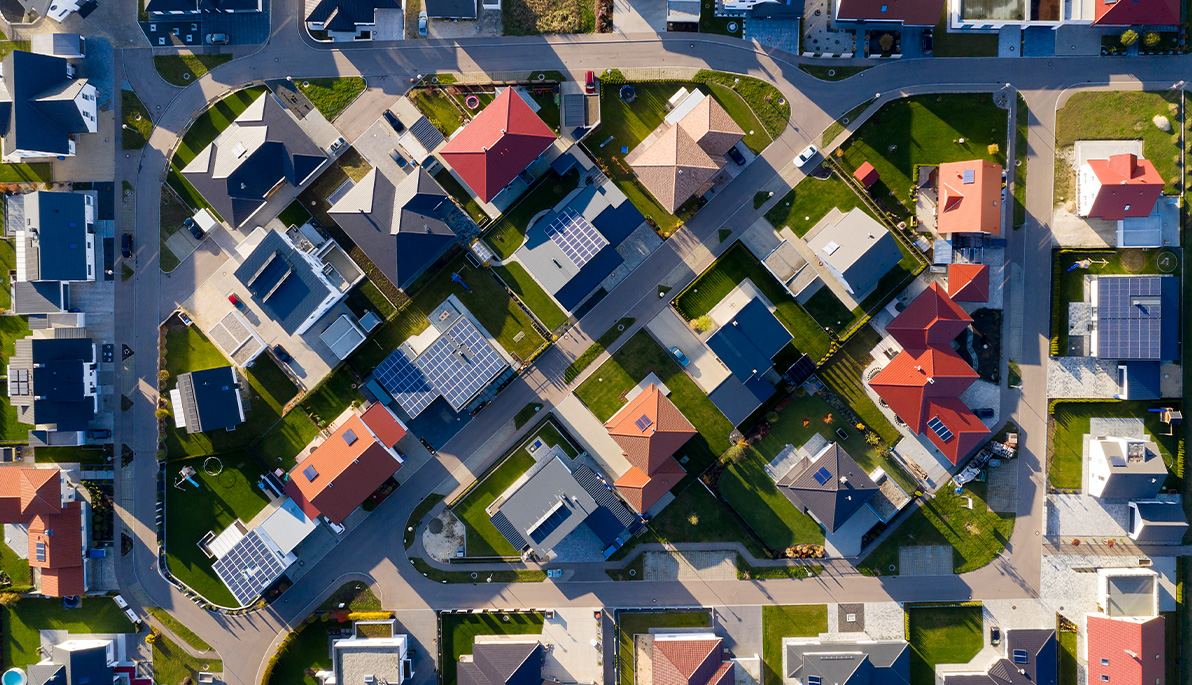News
Shedding Light on Residential Energy Use
August 10, 2022
Energy-efficient upgrades to homes and other residential buildings offer one of the greatest opportunities to reduce greenhouse gas emissions. Now that the U.S. Senate has passed the Inflation Reduction Act—which could offer American homeowners access to thousands of dollars in cash incentives for new hot water heaters, HVAC, insulation, and other enhancements—a spotlight has been cast on the residential energy efficiency market.
Given this, research in this field may be more important than ever before.
Ehsan Kamel, Ph.D., assistant professor of energy management and director of the Energy and Green Technologies Laboratory (EnTech Lab), is one New York Tech researcher who is shedding light on residential energy efficiency. Kamel has conducted extensive research on building energy modeling, energy-smart homes, building energy retrofit, and other related topics. His latest paper, published in the journal Buildings, explores the impact of energy-efficient upgrades to residential building envelope components, including walls, roofs, and windows.
New York Tech News sat down with him to learn more about his latest projects and how researchers are leveraging technology to study energy-efficiency solutions.
Tell us about this latest research project.
Buildings consume about 40 percent of the total energy use and 75 percent of the electricity in the United States. My project focuses on improving the simulation process for buildings’ energy performance and finding the most effective energy retrofit or conservation measures to reduce their energy consumption.
Our most recent publication was focused on building envelope components, such as walls, roofs, and windows. But other systems such as heating, cooling, and lighting could be as important, if not more.
How do researchers, like yourself, use energy modeling tools and machine learning to study and identify energy conservation methods?
We use different approaches to predict buildings’ energy consumption under different scenarios. The goal is to change one or more features in buildings or their environment and see how these changes impact their energy use.
Let’s say a facility manager decides to change their boilers and replace them with ground-source heat pumps or change their windows from single-pane to triple-pane. How much energy could that save? What is the payback period? How would that affect the thermal comfort of the occupants? One can answer these questions using different energy modeling tools and techniques.
Or, in another project, we’re applying the weather data for the year 2099 to predict the changes in the buildings’ energy performance on an urban scale.
What are some of the most common energy conservation measures taken in residential buildings?
Energy conservation measures (ECMs) could be focused on the heating and cooling, lighting, or building envelope systems. Our study was focused on the building envelope. Depending on the scope and budget, buildings adopt measures such as adding insulation to the walls or roofs, replacing windows, adding coatings to the existing windows, or air sealing the building. Projects using a bundle of measures show much higher energy savings.
Are some energy-efficient measures more effective than others?
Absolutely. But a measure’s effectiveness depends on multiple factors such as the type (e.g., residential vs. commercial), operation hours, pre-retrofit condition, and the climate zone. And don’t forget that “effectiveness” refers to the energy-saving potential. However, the capital budget is critical outside of research. Researchers can find the most effective measures, but the initial cost could be too high, which means that the payback period could be too long.
How might retrofitting a residential building differ between different climate zones?
The climate zone determines the average temperature and humidity. It also gives information about solar radiation, wind speed, precipitation, etc. These could all be essential factors in buildings’ energy performance. For example, suppose we are in an area with significant solar radiation. In that case, optimizing the windows’ thermal properties is more effective rather than spending too much time and money on adding roof insulation. Also, air sealing a building is one of the most effective measures to reduce energy use, regardless of the climate zone.
How do building type and age impact energy savings?
Building type (e.g., school, home, office, hospital, etc.) could significantly change the operation hours, the heating and cooling systems, or the temperature setpoints. The age of the building could also determine how much insulation exists inside the walls. Because the energy standards have changed throughout the years, a building built in early 1900 has much lower insulation than a building constructed in the last decade.
An exaggerated example I use in my classes to explain this is an abandoned building that doesn’t use any energy. Therefore the energy saving of any retrofit measure would be zero. The more hours the building operates, the higher the energy saving would be. That’s why in our recent paper, we suggested that all the energy conservation measures should be modeled on a benchmark or prototype building to report their energy-saving potential and make them comparable.
What does the future hold for energy-efficient building envelopes?
The trend in building envelope ECMs seems to be toward precast multi-layer components to combine the benefits of various materials and solutions in a cost-effective approach. The reported energy savings show that conventional methods can be as effective as innovative and emerging approaches. However, newer materials in this field are under studied, such as aerogel, phase change material, reflective coatings, etc. I would predict that we’ll also see more studies exploring these materials in the coming years.
This interview has been edited and condensed.





